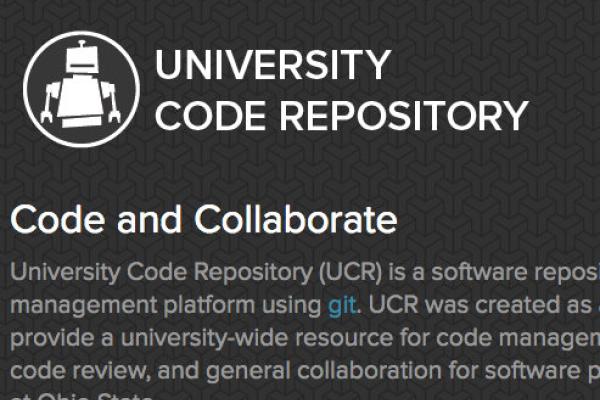ASCTech helps establish Ohio State code repository

Ten months ago, ASCTech’s Application Development team had a simple question: “Why are Ohio State programmers re-creating so many pieces of code when they could just pool resources and save themselves so much time?” So was born code.osu.edu, Ohio State’s first online code repository.
A repository of reusable code may seem counter-intuitive at first, since software applications appear to be so customized - indeed, one of ASCTech's unique attributes at Ohio State is its ability to program custom applications for faculty and staff. However, computer programs are designed to be modular and to allow different pieces of code to be used in various projects. These repeating pieces of code were exactly what George Abraham, Manager of Application Development at ASCTech, knew could be usefully compiled into a database.
“The system has two main goals,” says Abraham, “Serving as a code ‘cooperative’ and also as a place where Ohio State can look at intellectual property (IP) and determine if it is commercially viable.”
ASCTech was already paying over a thousand dollars per year to a commercial code repository vendor. Multiply this fee over the many coding areas at the university and the repository has the potential to save Ohio State considerable money. The academic potential was easy to see as well, as Abraham explains: “This website can be a place for student, faculty, and staff programmers to place their work and get feedback on and interest in it.”
Other coding areas around campus saw the value in Abraham’s idea and joined in. The Ohio State Technology Commercialization Office (TCO) was an early partner. As Dan Rockwell, Program Manager of the Software Prototyping Center at TCO, says, “Many don’t realize this but some of our most promising software-related intellectual property are based on tools and ideas that we the university built for ourselves. This is intellectual property that we developed, we own, we realized. According to an OCIO survey, more than 600 developers work at Ohio State, and through that the compelling question to the TCO was ‘Where is all that software intellectual property being stored?’ ”
This concern for protecting the work of Ohio State coders extended beyond simply where the code was held, extending into an important economic realm. Rockwell explains it as “If we don’t protect our IP, we risk losing it, and in losing it we risk losing the potential on that IP. TCO helped spearhead this mission for software repository to aid in the storing of software-related IP across the campus but also to provide collaboration and clarity.”
TCO joined several other partners, including the Office of the Chief Information Officer, which contributed project management, programming time, and eventually a host site, and University Communications, which contributed design and programming resources. The College of Engineering and other areas beta-tested the site to ensure smooth operation.
Ohio State’s KMData project is one of the most visible programs that have used code from the repository. KMData brings together information from various sources across campus, or as Abraham puts it, KMData “integrates data silos.” The Math Department was an early adopter and Spring 2013 will be the first time that a website will display courses from KMData instead of a manually updated webpage.
Rockwell points out, “TCO could not have picked better partners on this project. Arts & Sciences, OCIO, and Communications all came to the table to help, and together we built an aggressive, forward-thinking team that has executed a vision for what one university can stand for and be proud of.”
